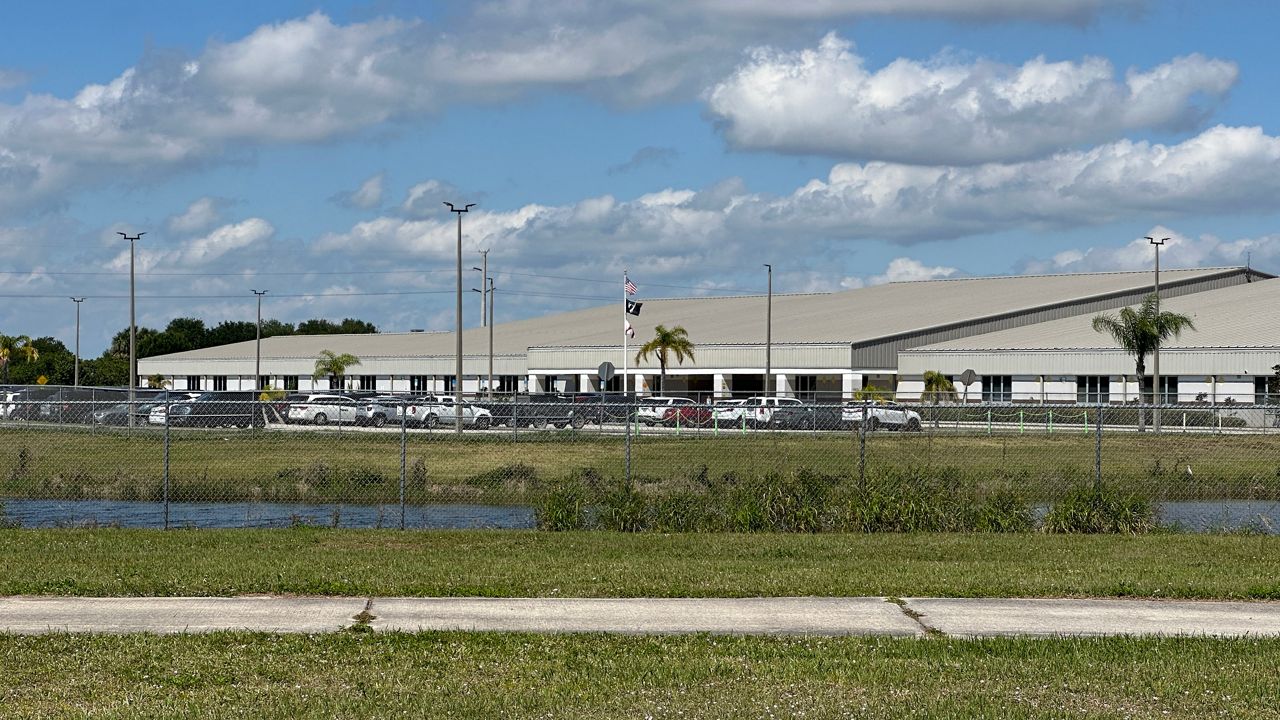ORLANDO, Fla. — As Orlando International Airport celebrates a new terminal and record travel, it’s now undergoing more projects and upgrades, including adding moving walkways throughout the new Terminal C.
There’s no denying Central Florida is in high demand for tourists.
Beating early pandemic expectations, Orlando International Airport handled more than 55 million passengers in the last 12 months last year.
The record surge of flyers has come at a cost and a demand to adapt.
“When the original terminal was built, it opened in 1981, it could handle about 24 million passengers,” Kevin Thibault, CEO of Greater Orlando Aviation Authority said. “We expanded it so at the end of the day Terminals A and B, with the four airsides, can handle anywhere between 45 to 48 million passengers. We’ve done incremental improvements to seek out more capacity, but at some point some things give way and those things are the baggage system, curb lengths, TSA checkpoints, and ticket counters; those four things really control how much volume we can push through a terminal.”
Orlando International Airport leaders knew years ago that the terminals were exceeding capacity, which is why they started planning for the years and decades to come.
In September 2022, MCO opened the new Terminal C.
It took years of planning and $2.8 billion to build.
Anchored by JetBlue Airways and a variety of international airlines, Terminal C processed nearly 6.4 million passengers and operated more than 48,300 flights.
As it’s constructed now with 15 gates — some capable of handling the largest passenger aircraft, including an A380 — Terminal C can handle up to 10 million passengers.
Terminal C Upgrades
Expecting growth to keep going, MCO leaders are already in the process of upgrading Terminal C by adding projects that were put on hold during the pandemic and preparing for renovations in the original Terminals A and B. These projects include:
- Moving Walkways
- Pedestrian Bridge
- Seating Areas
- Additional Gates
Crews are currently constructing a pedestrian bridge that will connect Terminal C directly to the Intermodal Terminal, allowing passengers to connect to MCO terminal trams and Brightline trains. This bridge will allow passengers to avoid walking through the parking garage as they must do now.
Moving walkways will also be installed within the pedestrian bridge, and throughout Terminal C itself, retrofitting areas for the walkways post-security.
“Some of it was how can we help with walking distance and that’s what we’re doing now and we’re not stopping there,” Thibault said. “We’re looking at other features that we can implement. We’re looking at more room for seating, and as this area grows, we’re putting in more seating, more interior landscaping, more trees, and so on to build on those added features.”
They expect the pedestrian bridge and moving walkway to be completed in 2024.
Crews are also in the process of building 8 narrow body gates that were in the original plans for Terminal C, but also put on hold due to funding uncertainty during the pandemic.
The additional gates under construction now will open by the end of 2025, expanding capacity for an additional 3-5 million passengers.
Long term, Thibault said Phase II expansions include an additional 16 to 24 gates built at Terminal C.
Thibault said short-term and long-term planning is focused on keeping up with growth.
“We’re actually getting out in front of where this growth is taking us so we can keep ahead,” Thibault said. “Having the size (12,000 acres) gives us the ability to grow and handle growth without impacting Terminals A and B, so in the master plan we envision Terminal D on the other side of the train station, mirror image of Terminal C, so as we grow we have a plan to follow that says this is how we handle that growth.”
Terminal A & B Upgrades
Over time, Thibault said MCO has tweaked aspects of Terminals A and B to increase capacity. This includes a project a few years ago expanding the security screening area.
Future renovations and upgrades to Terminals A and B are still in the planning phase.
“We test our general consultant to look at what are things we need to look at when it comes to upgrades to the current airside, based on volume of passengers going through there,” Thibault said. “It opened in 1981 when aircraft were smaller, flights going through were a lot less, so the rooms, restrooms, all common areas are smaller because of smaller aircraft and so on, so a lot of the airlines have upgraded their aircraft, so we need to respond accordingly.”
In planning exactly how to retrofit and upgrade the terminals that are over 40-years-old, Thibault said they’re drawing inspiration from the regions, theme parks and attractions.
“You think about what EPCOT is going through and the renovations, it opened in 1981, same look back then,” Thibault said. “What did they do there? What has Universal been doing? What has SeaWorld been doing in upgrading their facility? We take that inspiration and see what we can do here at the airport.”
Thibault said the focus is on keeping up with demand and growing ahead of the growth. Facing some structural limitations, Thibault said they’re focused on creating an “Orlando Experience.”










